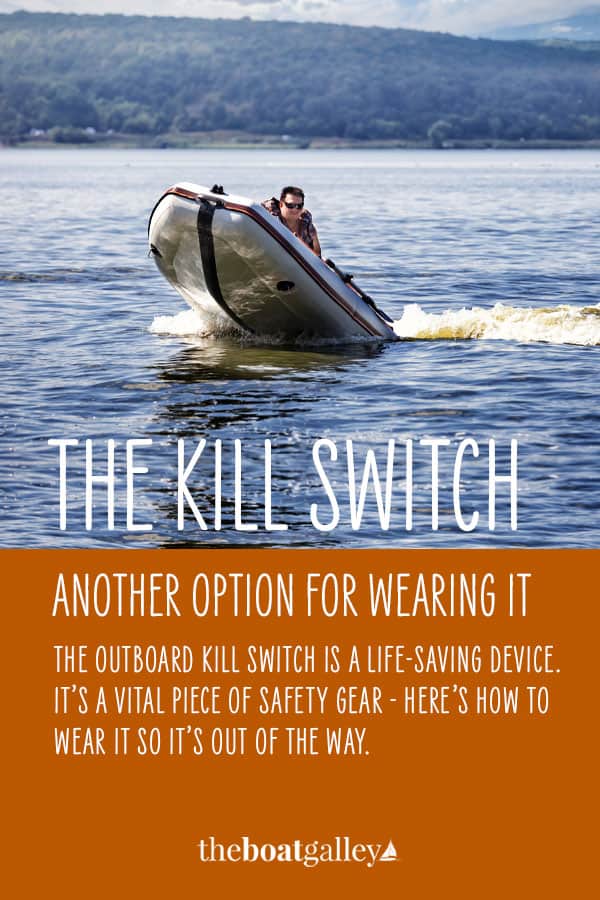
Wearing the outboard kill cord is important. If you’re the driver — particularly if you’re alone — and happen to fall out, it’s likely that the dinghy will travel in a circle and hit you.
Believe me, you don’t want to be hit by a prop. As a teenager, twice I helped rescue someone who had been hit and I never want to see injuries like those again (one was a diver and one a water-skier; dinghies weren’t involved).
I know of one incident in the Bahamas about 5 years ago where one boater was killed after falling out of his circling dinghy and a rescuer was seriously injured. I’ve recently heard of a couple more very serious injuries, and numerous near-misses. In another case, the dinghy went straight and the driver was left over a half mile offshore . . . a long swim not to mention needing to replace the dinghy.
The outboard kill switch instantly stops the motor when the lanyard is pulled. So the dinghy doesn’t circle back to hit you or head out to parts unknown. It simply stops right near you.
But the outboard kill switch only works if you wear the leash. And that’s the problem.
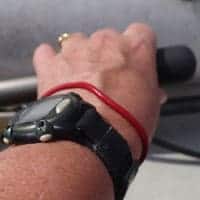
People generally wear the lanyard around their wrist, as in the photo at right. If you reach to grab something out of the water, or grab the dog who’s about to jump overboard, you’ll probably pull the clip out. And then the motor stops, you have to put the clip back in, start the motor and then go on your way . . . maybe to have it all happen again.
So people don’t wear the kill cords.
Here’s a better idea if you need your hands free: slip the lanyard around your ankle or clip it to your belt or PFD.
If you go overboard, it’ll still stop the motor, but you’re not as likely to kill the motor just by reaching for something.
P.S. If you ever lose your kill lanyard, you can buy one with a collection of fittings to fit any engine (see it on Amazon). If it’s not quite long enough, you can extend it by tying a bit of 1/8″ line between the lanyard and the clip.
Read Next

Quickly find anchorages, services, bridges, and more with our topic-focused, easy-to-use waterproof guides. Covering the ICW, Bahamas, Florida, and Chesapeake.
Explore All Guides

Carolyn Shearlock has lived aboard full-time for 17 years, splitting her time between a Tayana 37 monohull and a Gemini 105 catamaran. She’s cruised over 14,000 miles, from Pacific Mexico and Central America to Florida and the Bahamas, gaining firsthand experience with the joys and challenges of life on the water.
Through The Boat Galley, Carolyn has helped thousands of people explore, prepare for, and enjoy life afloat. She shares her expertise as an instructor at Cruisers University, in leading boating publications, and through her bestselling book, The Boat Galley Cookbook. She is passionate about helping others embark on their liveaboard journey—making life on the water simpler, safer, and more enjoyable.
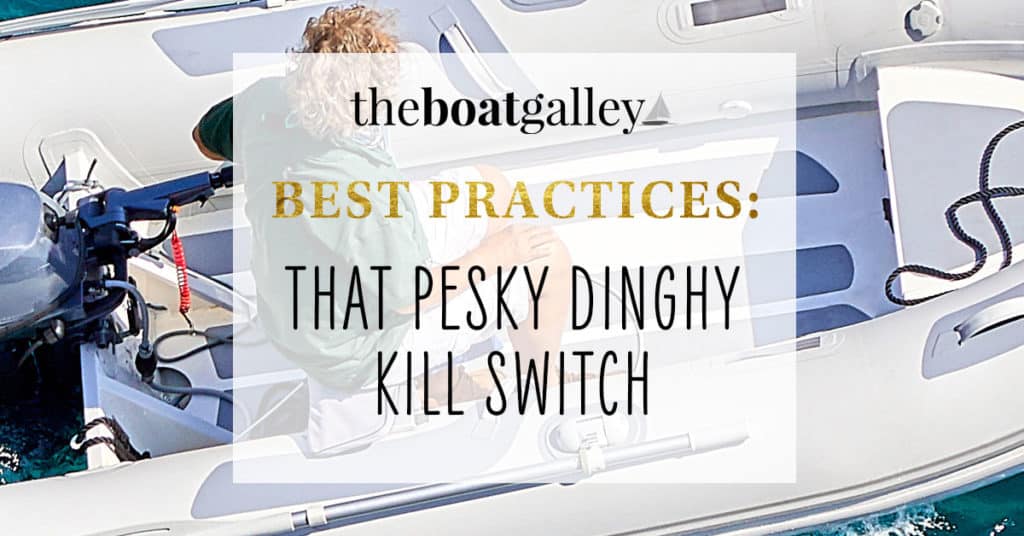


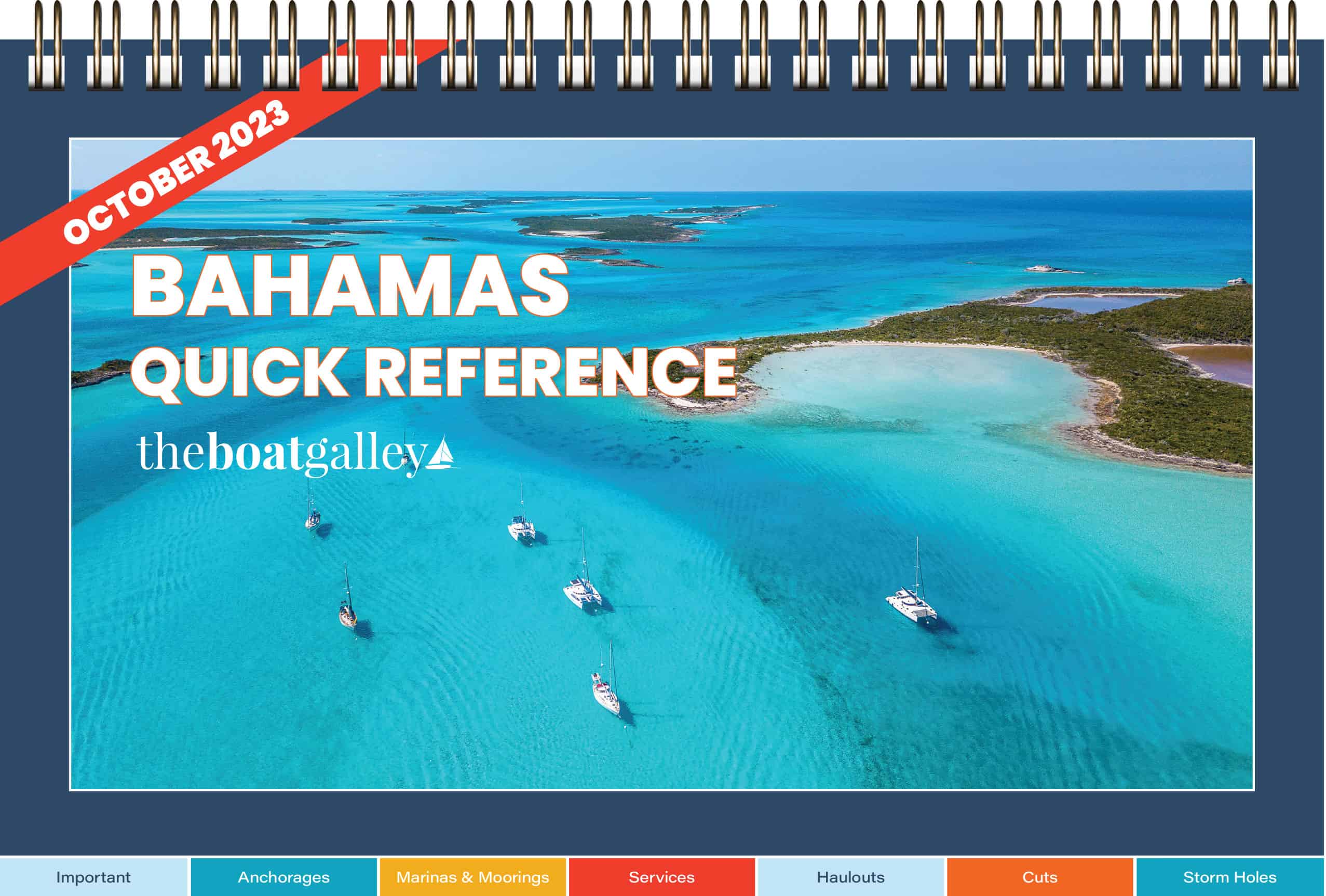
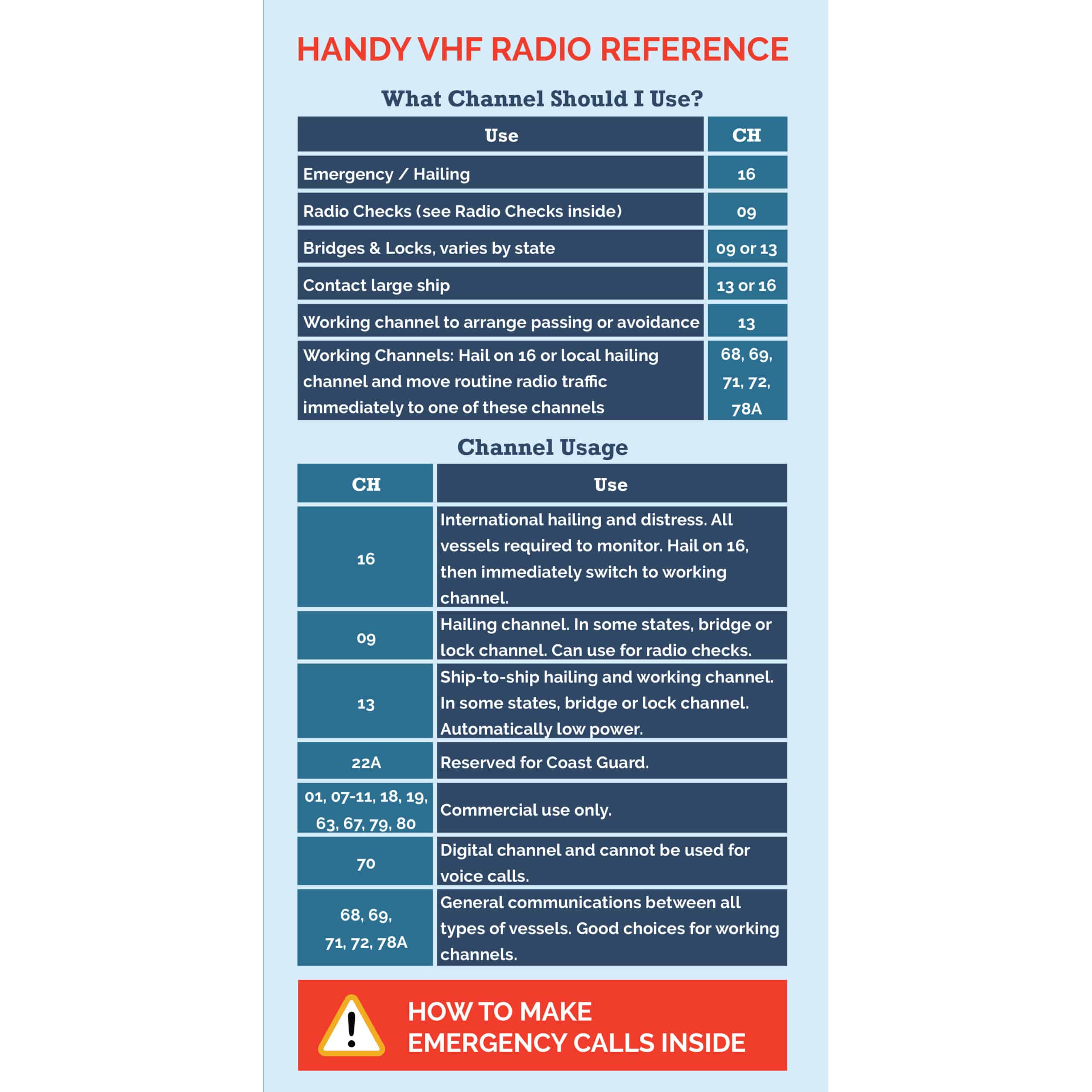




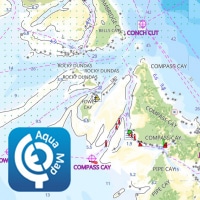
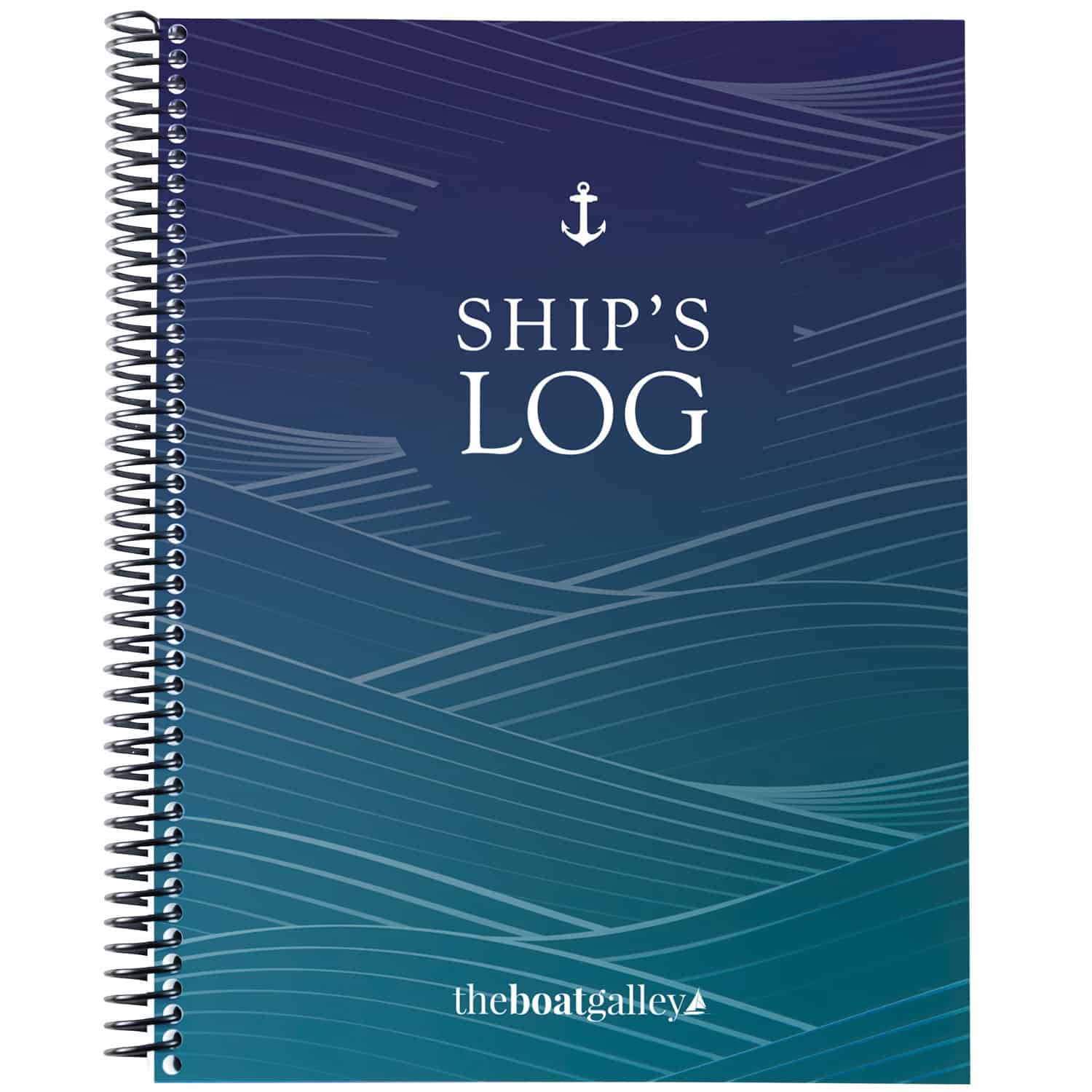
Jonathan says
Thank you for the reminder and the perfect suggestion. Especially when I am alone, I will do it, I will fashion an extension line with a velcro loop on the end.
Mark and Cindy - s/v Cream Puff says
I like this idea.
Chris&Janet says
We also added a key float to ours after watching a couple mucking about in a pretty foul harbor bottom looking for theirs.
Mark and Cindy - s/v Cream Puff says
Great idea, too.
Mark and Cindy - s/v Cream Puff says
Carolyn,
Great idea. Thanks for sharing. I have always worn it on the wrist and it truly is a pain in the rear. But, I had always thought better safe than sorry. I found an extension for it and added that but, I really like the ankle idea better.
I also wear a life jacket, especially when I am alone in the dinghy, and especially at night. I find myself in the minority here.
Cindy
Mark and Cindy – s/v Cream Puff
http://www.creampuff.us
james Shell says
One problem we have had is getting the kill lanyard fouled with something and would not pull off the engine. Be sure to have a clean pull away at all times. It is very important for the engine to stop!
Rob on Avant says
Changing out the tiny clip for a bigger one (like a carabiner) makes it easier to use too. Then you can clip to a regular belt, wider strap on a PFD, etc. with ease. Adding a float is a must, as is having a spare aboard (just in case).
Janet Helen Hargis-Roberts says
An evil necessity. Thank you so much for posting again.
Michael Burby says
I teach safe power boating and for the last 3 years that is where I teach people to put it
Chris Jackman says
Plus 1 for the caribiner. i always clip to the belt on my shorts. Get to destination, kill cord comes with you, put it in pocket and you never lose it !
Jeanne says
A very dear friend of ours was assisting another boater in February, who had fallen out of his 14′ dinghy w/ 50hsp at full throttle. John got the other guy out of the water, only to watch the runaway dinghy bounce off another boat and head right towards them, hitting them 4 times. John lost his lower left leg in this accident. The kill switch on the runaway dinghy was attached to the key, in the ignition, but NOT on the driver. We’re very glad to have our friend still with us, and we ALL wear our pretty red kill switches!
Bill y Jean says
After the first time we saw a runaway dinghy we started wearing our kils switch lanyard. Without it you could easily kill yourself, your passenger, or some other innocent person.
Mike says
I clip mine to one of the straps of my life jacket. And I replaced that pesky clip with a larger aluminum carabiner. Its easy to get on and off.
Chris says
You may have read of the British woman whose whole family were thrown out of the RIB – her husband and one daugher were killed by the RIB when it circled and the propeller hit them. The wife also a leg amputated at the knee. Tragic.
Jennie says
I’m with Mike, when jet skiiing i always clip it to my buoyancy aid.
Steve Stucko says
With my RiB I find its convenient to simply snap the lanyard to a (secure) belt loop on the side of my pants that faces the stern. Both hands are free, I can move about easily. When I get to my destination it stays attached and is dropped into my pocket preventing loss or an unplanned swim.
Munchkin Lives says
LOL
Brian Ross says
I snap mine to one of the belt loops on my shorts. I can stand and move a little, and no issues. When we reach shore it comes with me – never lose it.
Fleur Bearda says
…buuut…my brand new yamaha outboard doesn’t have a kill switch…
Dan Scoltock says
Dont worry it doesnt go very fast anyway you could probably catch it
Fleur Bearda says
Knowing my luck it would go round and round in ever decreasing circles and then bite me!
Dan Scoltock says
Maybe at least it would be coming back think positive
The Boat Galley says
What HP? I’ve never heard of an outboard that didn’t have one.
Fleur Bearda says
3hp. I was pretty surprised too.
Dave Skolnick says
Add me to the list of those who use a belt loop. This presupposes of course that you HAVE a belt loop. *grin*
Your best friend in responding to a runaway dinghy is a length of dockline. Throw it so it uncoils across the path of the dinghy and when it coils around the prop the engine will stop.
Darren O'Brien says
That IS a great idea. Cruising in a temperate region I just clip the switch to a belt loop. But on those rare hot days when swim suits are in order, I’ll definitely try this. Thanks for sharing, Sheryl! We shared, too…
David Stewart says
I clip it to a belt loop, and depending on what I’m doing in the dink, i will add a short line as an extender. The ankle is a good idea too.
Paul Alcock says
I’m reminded, by my better half, every time I set off in the dink – not that I need reminding.
Once, I moved to the front of the dink and the, weak, plastic cord for the switch snapped and the black switch toggle flipped over board – it doesn’t float! I jury rigged it with a piece of cord I had in the dink. Now I carry a spare with me, always !!
Ryan says
My partner inadvertently overbalanced and fell out over Port bow of our small 2.8m inflatable tender. I quickly de throttled then went to pull the kill switch (attached to wrist) however the springy kill switch didn’t pull as I was sitting next to the 8hp outboard. The prop hit hit her severing elbow tendons in a remote anchorage in the Pacific. Worse still the jacket she was wearing wrapped around the now stopped prop holding her under water. I was able to jump in to hold her head above water then effect a rescue through the help of another cruiser. All has ended well with a full recovery but what we learnt is to have the kill switch on but make sure it is tight so that it will easily pull out in an emergency. Also have all passengers holding on with TWO hands plus have a PFD in the tender at all times. Just think how you would go about lifting an incapacited person back into the tender whilst treading water. At least with a PFD and a rope you could tow them to safety.
Carolyn Shearlock says
Oh, I am so sorry to hear of that. Yes, grabbing it right near where it’s attached the boat may be necessary if you’re right by the engine, and all those are great points to make.